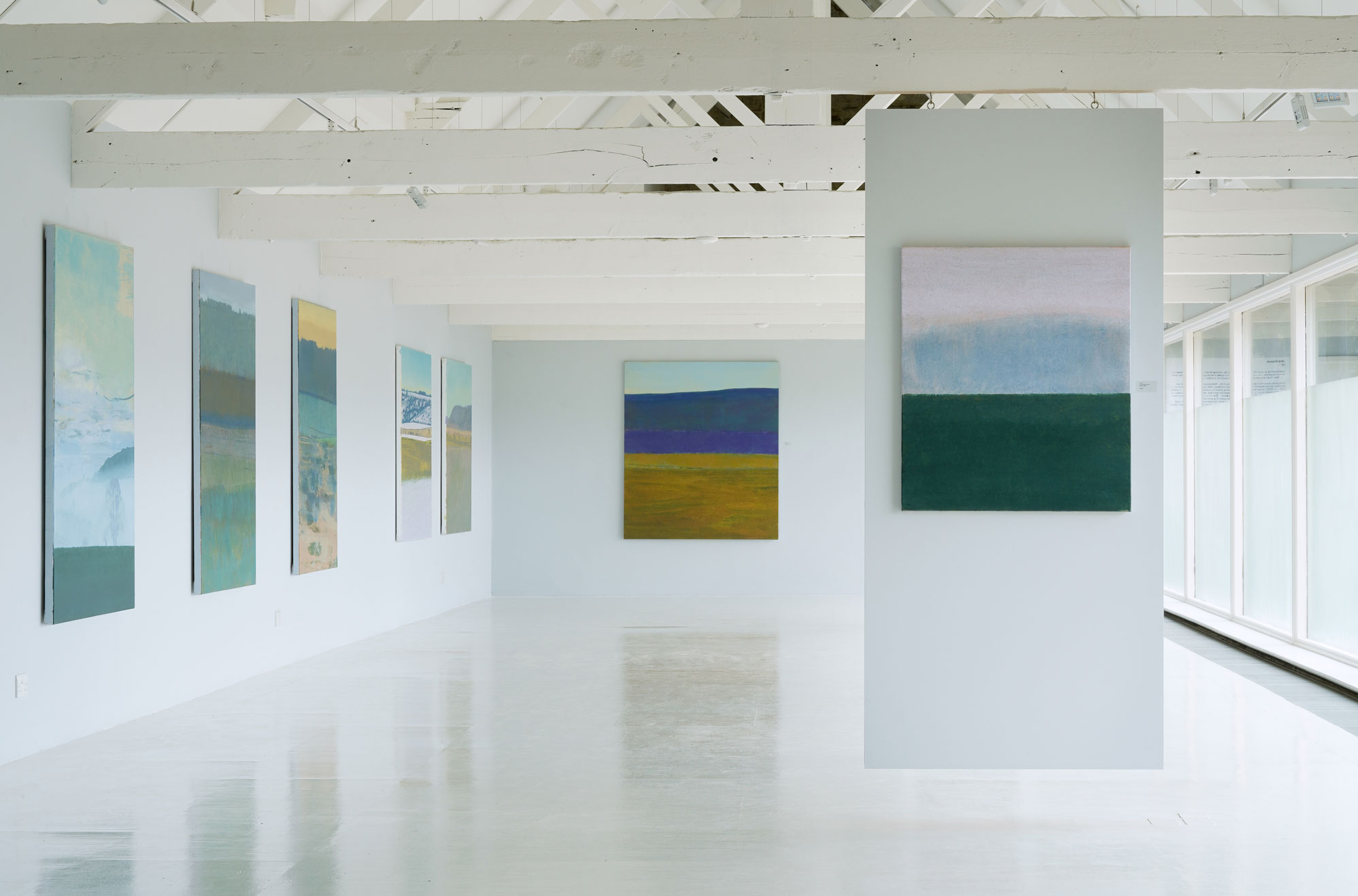- Home » Exhibition » EXHIBITION: John Beard ‘Hill’

15 May – 11 July 2021
John Beard is an artist who has led an adventurous life, leaving Britain in the early 1980s to teach in western Australia, then settling in Sydney, while at the same time showing his work all over the world — in New York and Delhi, Madrid, Melbourne, New Zealand, London, Lisbon and St. Ives.
I first got to know him in the late 1990s, when a work of his, Wanganui Heads, was included in an exhibition at the National Portrait Gallery, Painting the Century, held to celebrate the millennium in 2000. In 2007, he won the Archibald Prize, the leading prize for portraiture in Australia and, in some ways, the world, since it is a prize of such long-established prestige, centre stage in the Australian art world in a way that the BP Portrait Award never has been. But he is not a portrait painter, any more than he is a landscape painter. He’s a painter of disappearing and sometimes ephemeral appearances — images which hover in a space somewhere between realism and abstraction, half real, half remembered, highly composed, but, at the same time, loosely brushed and ill-defined, not as seen, but touched, transmuted, as the ghost of physical appearances.
In the midst of this peripatetic and transient life, he arranged to rent a cottage in October 2020 in the heart of the Wiltshire countryside, due west of Salisbury, looking across fields and farmland towards a line of hills of the south Wiltshire Downs. Then came another COVID lockdown. He and his wife, Wendy, were trapped in Wiltshire by the epidemic, not allowed to meet people, not allowed to leave. They had only the view of the distant hills for company.
Out of this period of being stuck in the English countryside, he has produced a body of work which is intensely atmospheric and solitary, the landscape of fields and hills half seen, half absorbed into his imagination and then idealised into views of the snow and the mist, the wintry hills and the outlines of the distant trees along the horizon and the ploughed-up fields in diagonal lines stretched across the foreground, sometimes covered in a light dusting of snow.
He works in watercolour, too, as did Turner: watercolour which is such a wonderful medium for the depiction of atmosphere, because it is done at speed and cannot be over-worked. Again, you see the distant line of hills trailing off into the left-hand horizon; the evening light as the trees and fields merge, the only definition provided by the line of trees on the horizon, or, occasionally, one lone tree in the middle distance, providing an incident in an otherwise featureless landscape. Sometimes you can feel him sitting down and wanting to catch the last of the evening light in the watercolour.
Landscape is a difficult genre in the modern world, as is portraiture. It’s been too hackneyed, perverted by the ease and instantaneity of photography, so that it is hard to convey the restfulness of nothing, the subtleties of light, so ethereal, so liquid and imprecise.
Hovering, shimmering, transient. This is not conventional English landscape, but is instead both ordinary and epic at the same time; one piece of countryside, the south Wiltshire downs, seen over and over again as the months of COVID meant that there was no possibility of further exploration, only of enjoying and appreciating what is there — looking at it, thinking about it, visualising it, recording it, always the same, which for a period of time, six months, was all that he had to depict, no people to talk to, just fields and the distant line of downs.
Charles Saumarez Smith, 2021
Charles Saumarez Smith was Director of the UK’s National Portrait Gallery 1994–2002, Director of the National Gallery 2002–2007 and Secretary and Chief Executive of the Royal Academy 2007–2018. He is the author of East London; The Company of Artists: The Origins of the Royal Academy of Arts in London; and The National Gallery: A Short History, among other titles. He has written widely on architecture and the history of museums.